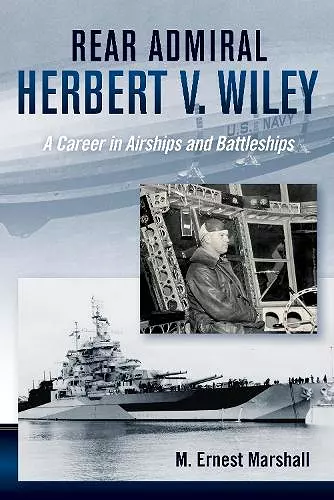Rear Admiral Herbert V. Wiley, U.S. Navy
A Career in Airships and Battleships
Format:Hardback
Publisher:Naval Institute Press
Published:30th Sep '19
Currently unavailable, our supplier has not provided us a restock date

This book is simultaneously a biography of Admiral Herbert Victor Wiley and a history of the U.S. Navy's lighter-than-air program. As tensions rose between Japan and the U.S. over control of East Asia and the Pacific Ocean the prospects of war between the two nations increased. The Navy tracked the Germans' use of zeppelins during the First World War and saw in them an aircraft with the potential to conduct long-range reconnaissance over the oceans – something that could not be achieved by airplanes or surface ships. While rapid progress was being made in manned flight it was still young enough that the future of LTA vs. HTA flight was unknown. At the time however airships had a much greater range than airplanes making them suitable for reconnaissance. In its history the Navy had four great airships – the U.S.S. Shenandoah the U.S.S. Los Angeles the U.S.S. Akron and the U.S.S. Macon. Wiley served on all four of these airships and the history of these vessels is covered through the career of Wiley. Three of the airships ended in disaster and Wiley survived the crash of two of them. The book explores in detail the events leading to the crash of each airship through examination of the records of the Navy's Courts of Inquiry that investigated the cause of each crash. The book also tracks issues surrounding the use of non-flammable helium as a lifting gas instead of highly explosive hydrogen used by the Germans. The U.S. had a monopoly on the supply of helium. While Germany sought to purchase helium from the U.S. the government board governing the sale of helium blocked is availability to Germany on the basis it might be used for wartime purposes. Dr. Hugo Eckener had run the Zeppelin works in Friedrichshaven since the end of WWI and he had a vision for LTA flight that was peaceful including international transoceanic passenger and freight services. The outbreak of WW II ended the zeppeling industry and dashed all of Eckener's dreams. Following the crash of the Macon Wiley returned to the surface fleet eventually becoming Commander of Destroyer Squadron 29 in the Asiatic Fleet shortly before the bombing of Pearl Harbor.
“Rear Adm. Wiley is a largely unknown figure from the U.S. Navy from the first half of the 20th century, so this biography does a great service in telling the story of his advocacy of airships as a maritime patrol platform.” —Seapower Winner of the Rear Admiral Samuel Eliot Morison Award
“Rear Admiral Herbert V. Wiley is a good account of the life and career of an important officer, and also worthwhile reading for those interested in the rise of naval aviation or institutional change in the naval service.” —StrategyPage
“This comprehensively researched and richly detailed biography is not only an invaluable reference to the history, personalities, doctrines, and most significant episodes of the American rigid airship program but is also an enjoyably readable insight into the professional and family life of an American naval officer in the interwar years.” —Dan Grossman, Airship Historian, Airships.net, author, Zeppelin Hindenburg: An Illustrated History of LZ-129
ISBN: 9781682473177
Dimensions: unknown
Weight: 698g
352 pages